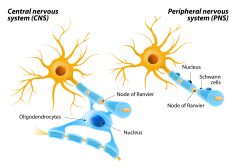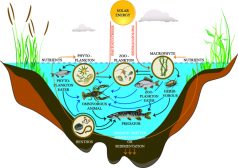Definition
noun, plural: pericentric inversions
(genetics) An inversion of a segment of chromosome in which the centromere is included, and breaks occur at both arms of the chromosome
Supplement
Chromosomal inversions are a type of a large-scale mutation. They are mutations at the chromosome level since they are associated with changes involving several nucleotides within a particular region. They occur when there is a double break in a segment of the chromosome, with end for end rotation of the fragment between the fracture lines, and then these fragments fuse again. When this happens there is a possibility of rearrangement of genes within the chromosome, which characterizes inversion. The reversal order of the genes in that particular segment may not necessarily lead to chromosomal abnormalities as long as there is no chromosomal imbalance, i.e. no extra or missing genes. Chromosomal inversions may be detected through genetic analysis and cytogenetic techniques.
There are two types of chromosomal inversions. They are the pericentric inversion and the paracentric inversion. A pericentric inversion is one that includes the centromere and the break point occurs in each arm. In paracentric inversion, the inversion of the chromosome involves the centromere and both breaks occur in one arm of the chromosome.
Word origin: Greek peri- (“around”) + centric (center)
Compare:
See also:







